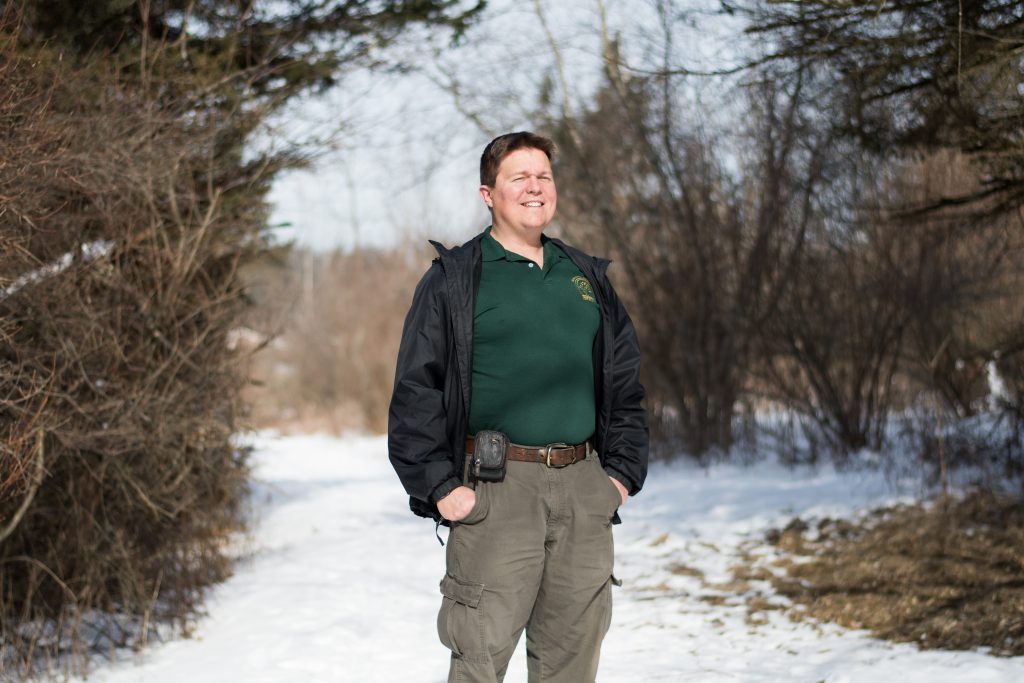
Binghamton University is surrounded by acres of forests and natural habitats. Among these natural areas is the BU Nature Preserve, a not-so-hidden gem of the University. The Nature Preserve has served as a resource for education, research and recreation — a refuge for students and community members when they crave the outdoors or are simply in need of a mind-clearing, restorative hike. Dylan Horvath, steward of BU’s natural areas, has overseen these beloved natural areas for 13 years.
Horvath took the position of steward of natural lands in 2006, making him the first and only land steward of the Nature Preserve. His job as steward of natural areas requires him to maintain trails, guide tours of the Nature Preserve, teach courses and manage the Nature Preserve’s website. Horvath became involved with the Nature Preserve long before he became steward of natural areas, volunteering there as a graduate student in biology.
“I probably spent more time in the Preserve than classes,” he said. “I don’t recommend doing this, but I skipped out on some of orientation to be in the Preserve.”
Though the Nature Preserve is just five minutes from student housing, it is still home to a variety of wildlife. There are some native species Horvath still hasn’t encountered — he’s never seen a bobcat, for example — and he describes the Nature Preserve as “safari-like” in the number of animals he sees, listing deer, foxes, bears and coyotes as some common inhabitants. Horvath’s favorite animal to spot in the Nature Preserve is the fisher, a three-foot-long, chocolate-colored animal related to the weasel. When Horvath started his job, fishers were nearly extinct in the area. He said fisher sightings are especially unique to the Nature Preserve.
“That’s usually an animal most people won’t see in their lives, but we have a good chance of seeing them here,” he said.
Horvath said that animal sightings are his favorite part of the job, emphasizing the value of getting to see animals in their natural habitat.
“I wish I could take a video with my eyes to show people what I see,” he said.
Student volunteers frequently help Horvath with trail maintenance and guided tours. Horvath also helps out with classes and assists students in conducting their own research. Horvath said he tries to involve students in everything he does, and he has been pleasantly surprised by the level of student involvement at BU.
“I thought I would just be alone out there,” he said. “I didn’t know how involved I would be with students and that’s the number one thing that has kept me here.”
According to Horvath, the Nature Preserve faces several threats and the overpopulation of deer is perhaps the most significant. While Binghamton represents an extreme, deer overpopulation is a common problem in areas where humans have caused natural predators to go extinct. Horvath also expresses concern over the impact of climate change on the Nature Preserve, citing shifting winters and increased rainfall as evidence of change in the region.
“We might represent the future of forests around us, especially urbanized forests. We’ve created the perfect habitat for the deer, and deer facilitate the invasion of non-native species,” he said.
Horvath’s hard work, love for the environment and the natural areas in Binghamton and willingness to share his passion with the community has allowed students and community members to continue enjoying the Nature Preserve for 13 years. As the technological age progresses and we inch closer and closer to a completely tech-driven society, Horvath urges people to keep the natural environment in mind. He said that a healthy environment should be important even to people who don’t particularly like the outdoors.
“Saving the environment is really about saving people,” he said. “What kind of world do we want to live in? I’ll probably never get to see a silverback gorilla in the wild, but I like to know they exist. I don’t want to live in a world that’s just buildings and virtual environments. I want a future with trees and nature.”


